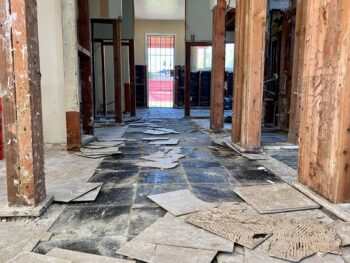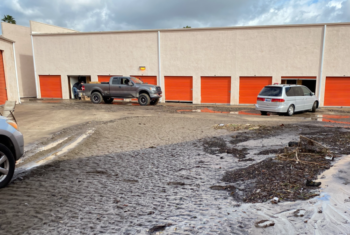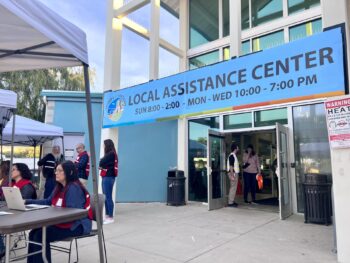The recent earthquakes in Los Angeles and Chile remind us natural disasters can strike any time.
That’s true here too, and some of the disasters San Diego County faces—like earthquakes or fast spreading fires—happen with virtually no warning. But that doesn’t mean we can’t do anything. Local governments can evaluate our biggest risks and do things to lessen their potential harm: put public warning systems in place, institute building codes that require fire resistant materials and retrofit structures to be more earthquake resistant, to name a few.
This year, the region’s 18 city governments, the County and several fire protection and water districts and are working together to update the region’s plan for mitigating the impact of potential disasters. The group is asking for your input through an online survey.
With 18 questions—16 of them multiple choice—the survey just takes a few minutes. It will help gauge residents’ level of disaster preparedness and awareness and help local governments set priorities for addressing potential disasters before they happen.
“We want to know what natural and manmade hazards you think are the biggest threats where you live, and how prepared you are to deal with them,” said Holly Crawford, San Diego County Office of Emergency Services Director. “We also want your ideas about the most important things government should do to help protect the region.”
The input will inform the region’s Multi-Jurisdictional Hazard Mitigation Plan, which is updated every five years and was last published in 2010. The 533 page plan describes the specific vulnerabilities and likely damage in each city and unincorporated communities in the event of various hazards, from earthquakes, to wildfires, to floods. The plan also outlines what each jurisdiction can do to mitigate the harm.
For the first time in this year’s plan update, local governments will address potential harm caused by severe weather and drought due to climate change.
The region’s updated plan will be reviewed by the state Office of Emergency Services and FEMA in early 2015. Besides the public survey, individual cities and districts may conduct public meetings and other outreach to get your input this year.
San Diego County’s Hazard Mitigation Plan was one of the first of its kind approved by FEMA in 2004. Local governments must adopt such a plan to qualify for federal hazard mitigation grants.





